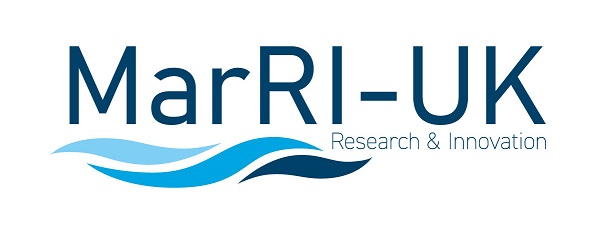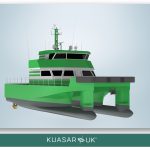WaveMaster Zero C led by Bibby Marine (vessel operator)

Project partners:
- Damen Shipyards, NL (vessel design/ build)
- Lloyd’s Register, UK (classification)
- Ricardo, UK (engineering/environmental)
- ORE Catapult, UK (research and market analysis)
- Square 5, UK (market insight)
- EFC Energy Solutions, UK (business case analysis)
- Houlder, UK (fuel supply and landside infrastructure)
Summary
The WaveMaster Zero C project (WMZC) is an innovative study that aimed to find the best-suited low or zero-emission fuel for the next generation of Service Operation Vessels (SOVs), inclusive of associated landside operations. The project has considered the technical, environmental, and economic challenges facing a transition to zero carbon shipping.
Five alternative fuels (hydrogen, ammonia, methanol, electric and biodiesel in the form of hydrotreated vegetable oil (HVO)) were investigated, and design concepts were produced for each. Following this a landside analysis of the bunkering and infrastructure capabilities of each was performed to assess the feasibility of the implementation each in the short, medium, and long-term. Finally, a complete environmental analysis of each fuel simulating a typical 2-week operating cycle was performed to determine the overall emission reduction of each.
A battery methanol hybrid solution was chosen most suitable low to zero emission option for immediate application in SOVs. The other fuels were eliminated for varying reasons such as low technological readiness levels of both design and manufacture, insufficient emissions reduction, lack of long-term production scalability and varying safety issues. A battery-based solution was favoured by industry professionals who attended the selection workshop. It was seen as the only way to be truly low or zero emission in the short-term, with lithium-ion batteries being technologically ready today. Many SOVs have a predictable duty cycle when operating from a single port and servicing a single wind farm. This allows for the low energy density of batteries to be a viable solution if supported with offshore charging infrastructure. The caveat of low or zero emission comes from the need for an auxiliary internal combustion engine (ICE). A redundancy power source is required for support during heavy operating conditions or emergencies as ‘get home safe’ insurance. Methanol was chosen as the secondary fuel due to its ability to be fully carbon neutral in the future through production and use of eMethanol utilising renewable electricity and a carbon capture storage system. In addition, methanol is lower emission per unit energy than conventionally used marine gasoil and other viable alternatives today like biofuel.
It is hoped that the outcomes of the project can act as a basis for a demonstrator vessel in the short-term future. It is expected that this technology demonstration would potentially be supported as part of the Clean Maritime Demonstration Competition and will be completed by Q1 2025. Delivery of a demonstration pro ect would showcase UK leadership in the design and manufacture of industry leading battery powered vessels. Currently none of the SOVs operating in UK waters were built in the UK. Early adoption and manufacture of these vessels could put UK shipbuilding at the forefront of a market projected to deliver up to 300 new build SOVs by 2050.
Bibby Marine Final Report
Send download link to:


